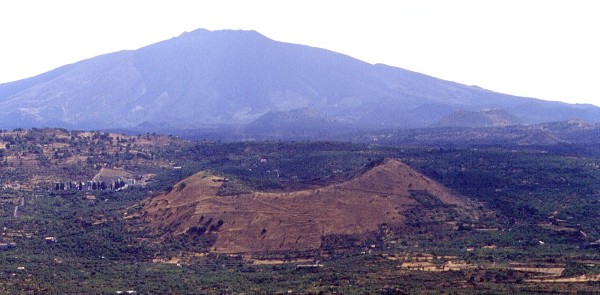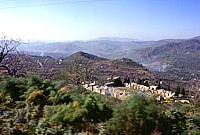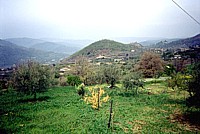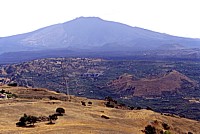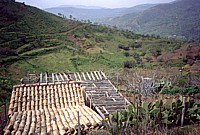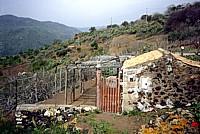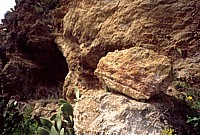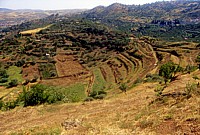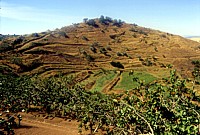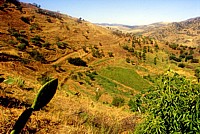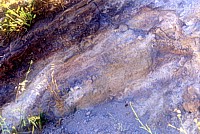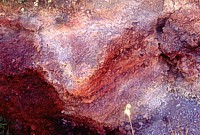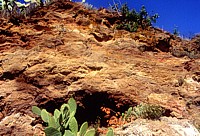| Etna
index |
||
| Geology | Geological history | Cones and craters |
| Eruptive characteristics | Eruptions before 1971 | Eruptions since 1971 |
| Etna and Man | References | Web sites |
| Weather forecasts | FAQ | Latest news |
Mamma
Etna's countless children
Monte Barca
W flank, 14.82042° E, 37.76991° N
Summit elevation: 756 m (S rim of crater)
![]()
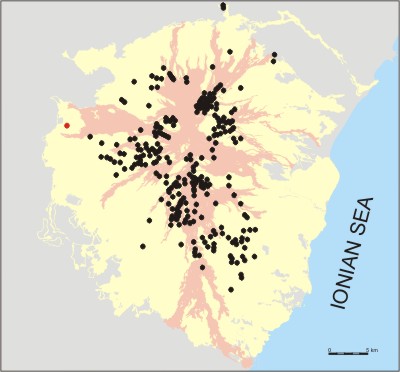 |
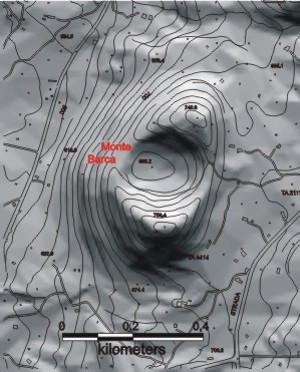 |
Together
with the larger
and better known Monte Moio, on Etna's lower
north flank, Monte Barca is one of the most remote of the numerous flank
cones of the volcano, lying 15.4 km to the west of the summit of the volcano.
The name (roughly translated into "the boat mountain") is due
to the peculiar shape of the cone when seen either from the east or from
the west, which truly resembles a simple boat. This cone lies perched
on the upper crest of a steep slope bounding the Simeto valley to the
west, amidst fruit gardens, and itself is extensively used for agriculture.
The age of Monte Barca is probably Holocene, but has not been constrained
by any dating effort so far. What is certain is that the pyroclastic deposits
making up its cone show an unusual degree of alteration, which may be
due to protracted fumarolic activity; alternatively this might be evidence
that the eruption of Monte Barca had a strong phreatomagmatic component.
The crater is 0.34 x 0.25 km wide and forms a simple saucer-shaped depression
with low rims on the eastern side and, more strongly expressed, on the
western side. A very small, strongly vegetated lava flow only about 1.2
km long and extending westward from the base of Monte Barca is shown on
the Geological Map of Mount Etna and may be associated with the eruption
that formed the cone.
I first visited Monte Barca in December 1998 but obtained a good photographic
documentation only in June 2003, when most of the photographs displayed
on this page were taken.
Copyright © Boris Behncke, "Italy's Volcanoes: The Cradle of Volcanology"
Page set up on 15 December 2003, last modified on 21 February 2004

